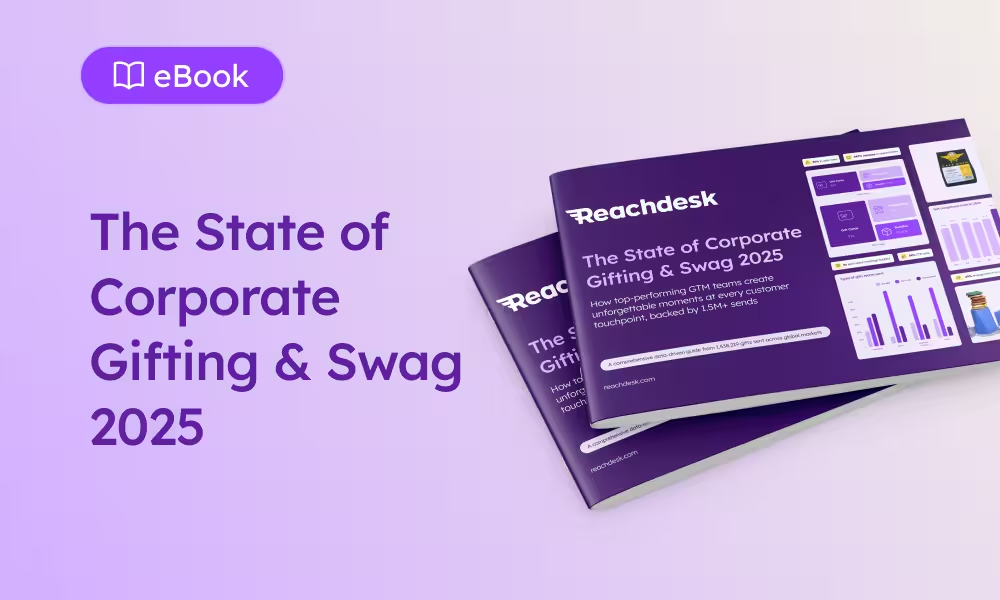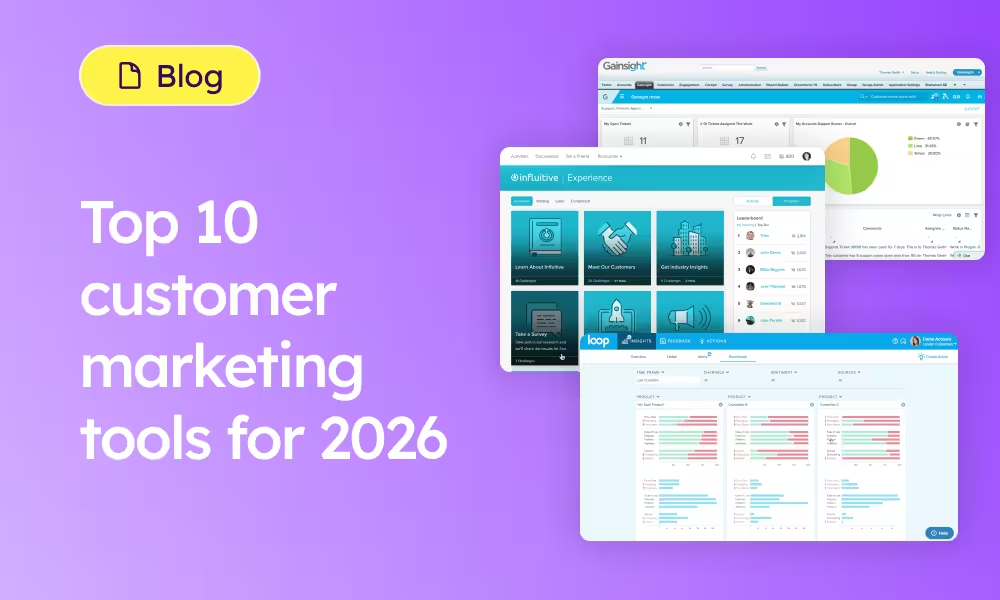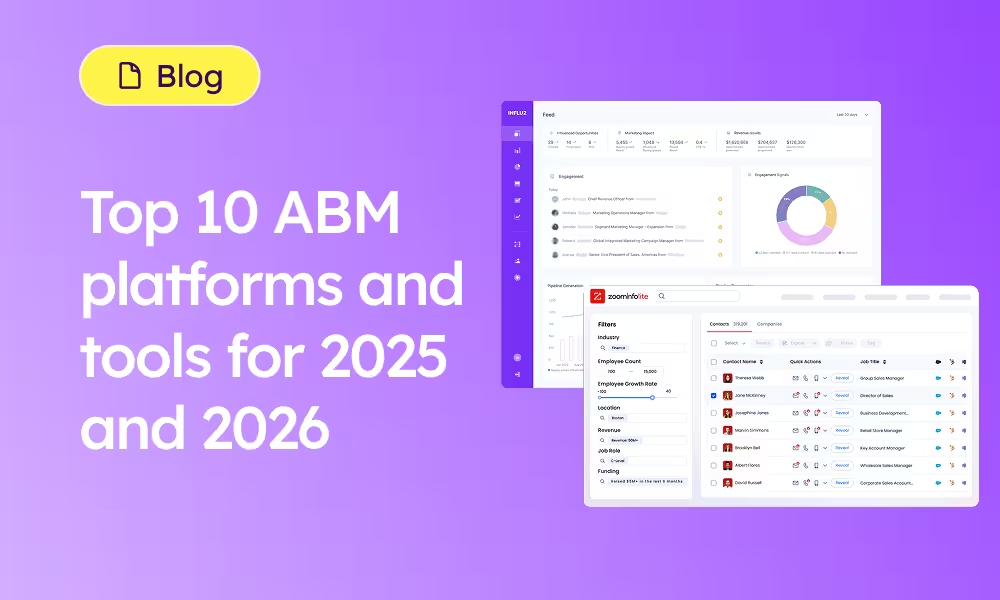One powerful platform for ROI-driven corporate gifting, swag, and engagement at scale.
In 2025, simply "building it and expecting them to come" doesn’t cut it anymore. The landscape has evolved, and in 2025, nailing your Ideal Customer Profile (ICP) is more critical than ever for driving a successful Account-Based Marketing (ABM) strategy.
When we founded Reachdesk, we knew the key to success was defining our ICP early. Doing so allowed us to carve out our niche, align our teams, and grow intentionally. From day one, our strategy wasn’t about waiting for inbound leads or embracing the buzzword of the moment, “product-led growth.” Instead, we focused on developing an account based marketing (ABM) strategy—selecting the right customers and crafting a personalized approach to win them over.
Here’s how we built our ICP and how to define your ICP for ABM in 2025 to stay ahead.
Step 1: Define your target market
Start by identifying your Total Addressable Market (TAM). This is the foundation of your ICP and ABM strategy.
In 2025, technology tools have made this easier than ever. You can use tools like Google Analytics and social media analytics to get a better understanding of your existing customer base and identify patterns in their behavior.
At Reachdesk, we used platforms like 6sense, ZoomInfo and LinkedIn Sales Navigator to help map out our TAM, analyze customer patterns, and forecast opportunities in the US, UK and EU.
Since then we refined our ICP by layering in AI insights, to focus on companies using specific technologies like Salesforce or HubSpot. These insights gave us a laser-focused view of where to prioritize our ABM campaigns ensuring our ABM strategy is targeting the right accounts, saving time and boosting ROI.
Step 2: Identify characteristics of your ideal customer profile (ICP)
Understanding your ideal customer characteristics transforms your ICP into a treasure map. In 2025, this means not just looking at demographics but also diving into technographics, buying intent signals, and behavioral data.
Example of our framework
We classify customers into three tiers:
- Core ICP: Our ideal, highest-intent customers. These are accounts with specific software stacks (e.g., Salesforce, Demandbase) that align seamlessly with our solution, demonstrating the strongest potential for mutual success and long-term engagement.
- Moderate ICP: Customers who may lack specific technographic criteria but align well overall, sharing traits like company size, location, or industry focus. These accounts require more tailored approaches but offer strong growth potential.
- Emerging ICP: Industry-agnostic customers showing intent signals in new sectors. They present opportunities to explore untapped markets and expand use cases, even if they don’t fit established criteria.
By focusing on these tiers, we discovered opportunities in industries like cybersecurity and logistics—sectors we hadn’t initially targeted but now thrive in.
Step 3: Create buyer personas
Buyer personas are the lifeblood of any ABM strategy development. They guide your sales and marketing teams in personalizing outreach. In 2025, these personas need to include evolving roles in organizations, such as RevOps leaders or AI adoption champions.
Building a persona in 2025
- Role: VP of Revenue Operations
- Challenges: Driving pipeline efficiency in hybrid work environments.
- Preferred Communication Channels: LinkedIn and interactive webinars.
- Goals: Automating manual processes and improving ROI on marketing spend.
Tip: Align messaging with your personas’ specific pain points. For us, targeting VPs and Directors rather than CMOs or CROs proved more effective in creating traction.
Step 4: Analyze competitors
Competitor analysis is a powerful way to uncover market gaps and identify opportunities. In 2025, advanced ABM tools like Demandbase and G2 intent data make it easier than ever to analyze where competitors are thriving and where they’re falling short.
For example, we discovered a competitor performing exceptionally well in the logistics sector. This insight led us to explore the niche ourselves, and today, logistics has become one of our fastest-growing verticals. By using data-driven insights to guide your strategy, you can uncover hidden opportunities and refine your focus to target high-potential markets.
Step 5: Prioritize “in-market” accounts
Today’s ABM isn’t just about targeting; it’s about timing. With intent-based tools like 6sense, prioritize accounts that are actively in the market for your solution. This ensures your outreach lands when prospects are ready to engage.
At Reachdesk, we shifted away from the traditional approach of passing vague "MQLs" to sales and introduced the 6QA framework (6sense Qualified Accounts). These are accounts demonstrating clear buying intent, allowing us to focus on leads that are already in the market for our solution.
By prioritizing 6QA accounts, we empowered our sales team to engage at the perfect moment, which resulted in shorter sales cycles and higher close rates. This targeted approach helped us connect with prospects who were ready to take action, driving more efficient and successful sales outcomes.
Step 6: Refine your ICP over time
Markets shift quickly, and so should your ICP. In 2025, quarterly ICP reviews are non-negotiable. Use AI to track trends, refine targeting, and spot new opportunities.
Take it from us at Reachdesk—we learned this lesson the hard way. Early on, we were too rigid with our ICP, limiting our potential. As we grew, we realized the importance of flexibility. Educating our teams on how to recognize exceptions to the rule allowed us to strike the right balance between staying focused and seizing new opportunities. This shift in mindset helped us remain adaptable while still maintaining a clear target.
Bonus step: Integrate corporate gifting into your ABM strategy
Corporate gifting is a powerful way to enhance your ABM efforts and engage your ICP. By sending personalized, relevant gifts to key decision-makers, you can create meaningful touchpoints that go beyond traditional outreach. At Reachdesk, we drink our own champagne and integrate gifting into our ABM strategy to break through the noise, build stronger relationships, and spark conversations with high-value accounts, driving more impactful engagement and faster sales cycles.
Want to learn more about Reachdesk’s corporate gifting solutions?
Book a demo with our team here.
2025 trends to watch for ABM and ICP development
As we move into 2025, several key trends will shape the future of ABM and ICP development. Staying ahead of these trends will ensure your ABM strategy remains effective and relevant in an ever-evolving market. Here's what to watch for:
1. Take advantage of AI-powered personalization
AI will transform ABM in 2025 by enabling hyper-personalized interactions. By using AI insights, you can tailor every email, ad, corporate gift and direct mail piece based on a prospect's behavior, preferences, and history. This ensures your outreach is always relevant and increases the likelihood of a positive response.
Top tip: Reachdesk AI delivers hyper-personalized corporate gift notes and emails based on your campaign goals, ICP interests, and the gift itself. Our Intelligent Search helps you find the perfect gift in seconds, whether it's for the "Boss CMO", a "Sweet Surprise” or something else.
2. Refine your ICP to include emerging roles
New roles like AI Operations Managers are emerging as AI becomes more integral to businesses. Including these personas in your ICP helps target organizations investing heavily in AI. Engaging with these forward-thinking roles allows you to connect with decision-makers who are driving innovation in their industries.
3. Create interactive campaigns with tools like Navattic
Interactive campaigns are becoming essential for ABM success. Tools like Navattic allow you to create guided product demos and tours that engage prospects in a more hands-on way. These personalized experiences help prospects understand your solution better and drive higher conversion rates. Check out one of our interactive demo examples here to inspire you.
4. Ensure sustainability is a priority
Sustainability will be a key focus in industries like manufacturing and logistics. Incorporating environmental considerations into your ICP can help target companies prioritizing green initiatives. Partnering with organizations that align with your sustainability values strengthens your brand and appeals to eco-conscious prospects.
Key takeaways for ABM success in 2025
At Reachdesk, here's what we learned on our journey to refining our ICP and scaling our ABM strategy. These insights helped us prioritize the right accounts, uncover new opportunities, and connect with our dream customers. Here's what you should focus on:
- Your ICP is the foundation of your ABM strategy. A clear and focused ICP allows you to target high-potential accounts and lay the groundwork for a successful ABM strategy.
- Stay flexible and refine your ICP regularly. The market shifts, and so should your ICP. Regular reviews ensure your strategy stays aligned with customer needs and trends.
- Use AI and intent-based tools to uncover opportunities. Use tools like 6sense and Demandbase to track buying signals and prioritize accounts that are ready to engage.
- Educate your team on ICP nuances. Make sure your sales, marketing, and success teams understand the subtleties of your ICP to avoid missed opportunities and align efforts.
- Start narrow and iterate over time. Focus on high-value accounts initially, then expand as you gather insights to scale effectively.
Your ICP isn’t just a matrix—it’s your guide to finding and winning your dream customers. Ready to see how Reachdesk can help you turn your ICP into a growth engine with integrated, global gifting solutions? Book a demo with us today and start turning your strategy into real business results.






.jpeg)



